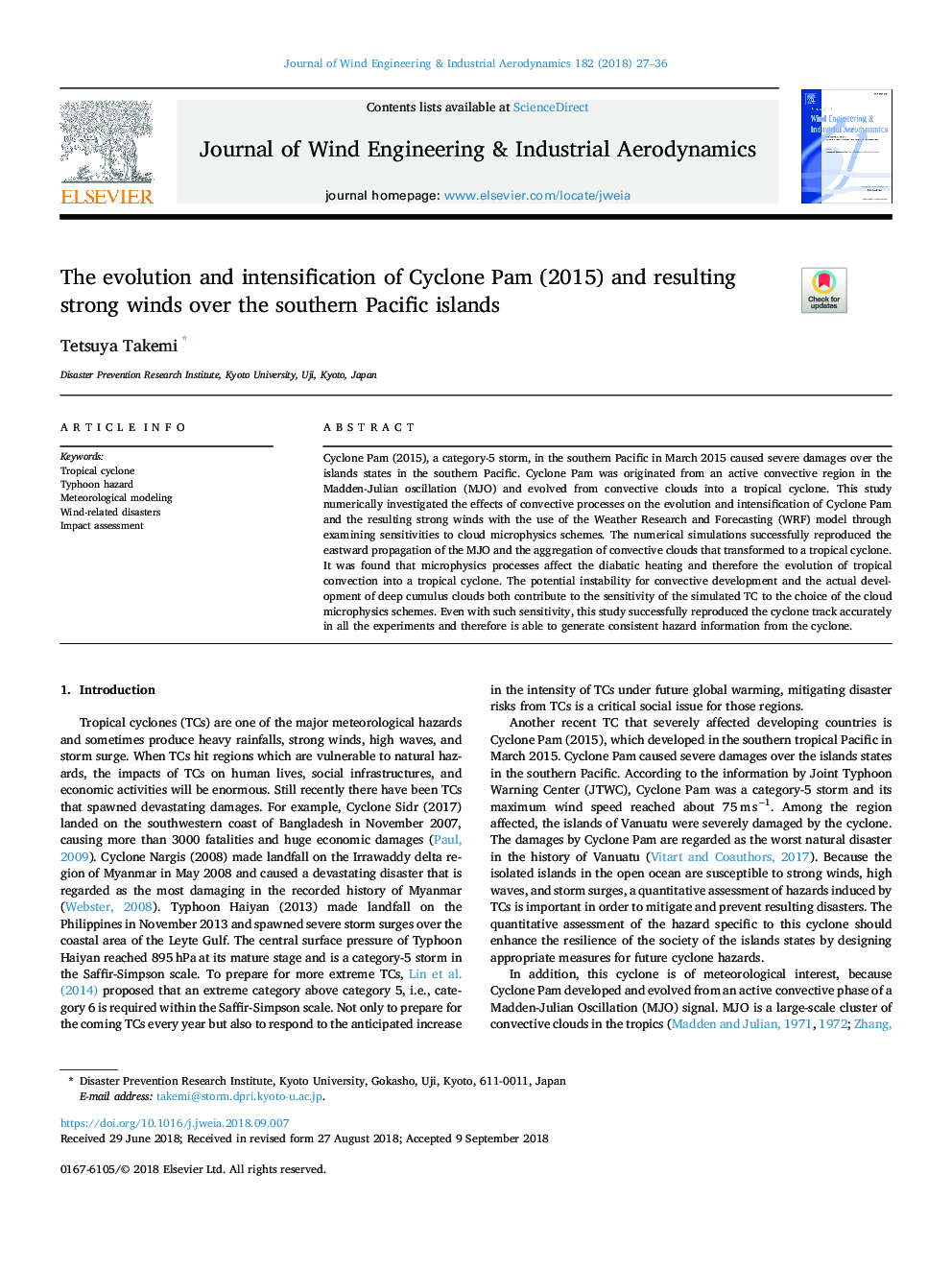| Article ID | Journal | Published Year | Pages | File Type |
|---|---|---|---|---|
| 10225452 | Journal of Wind Engineering and Industrial Aerodynamics | 2018 | 10 Pages |
Abstract
Cyclone Pam (2015), a category-5 storm, in the southern Pacific in March 2015 caused severe damages over the islands states in the southern Pacific. Cyclone Pam was originated from an active convective region in the Madden-Julian oscillation (MJO) and evolved from convective clouds into a tropical cyclone. This study numerically investigated the effects of convective processes on the evolution and intensification of Cyclone Pam and the resulting strong winds with the use of the Weather Research and Forecasting (WRF) model through examining sensitivities to cloud microphysics schemes. The numerical simulations successfully reproduced the eastward propagation of the MJO and the aggregation of convective clouds that transformed to a tropical cyclone. It was found that microphysics processes affect the diabatic heating and therefore the evolution of tropical convection into a tropical cyclone. The potential instability for convective development and the actual development of deep cumulus clouds both contribute to the sensitivity of the simulated TC to the choice of the cloud microphysics schemes. Even with such sensitivity, this study successfully reproduced the cyclone track accurately in all the experiments and therefore is able to generate consistent hazard information from the cyclone.
Related Topics
Physical Sciences and Engineering
Energy
Renewable Energy, Sustainability and the Environment
Authors
Tetsuya Takemi,
